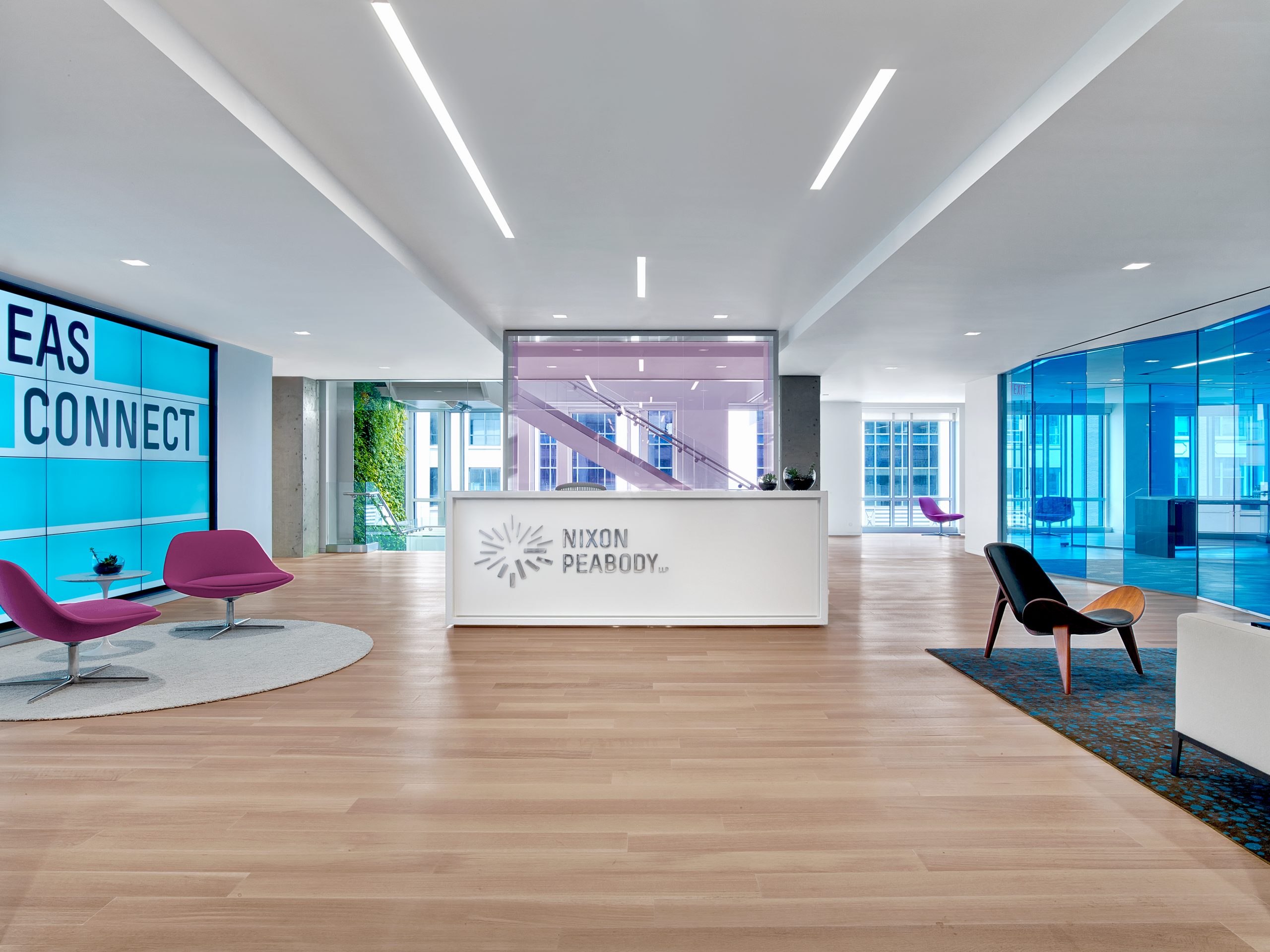Learn more about the host venue for our September 20 DC Work Design TALK, “The Evolution of Law Office Design”! Join us then for a tour of the space and the panel discussion. Tickets are available here.
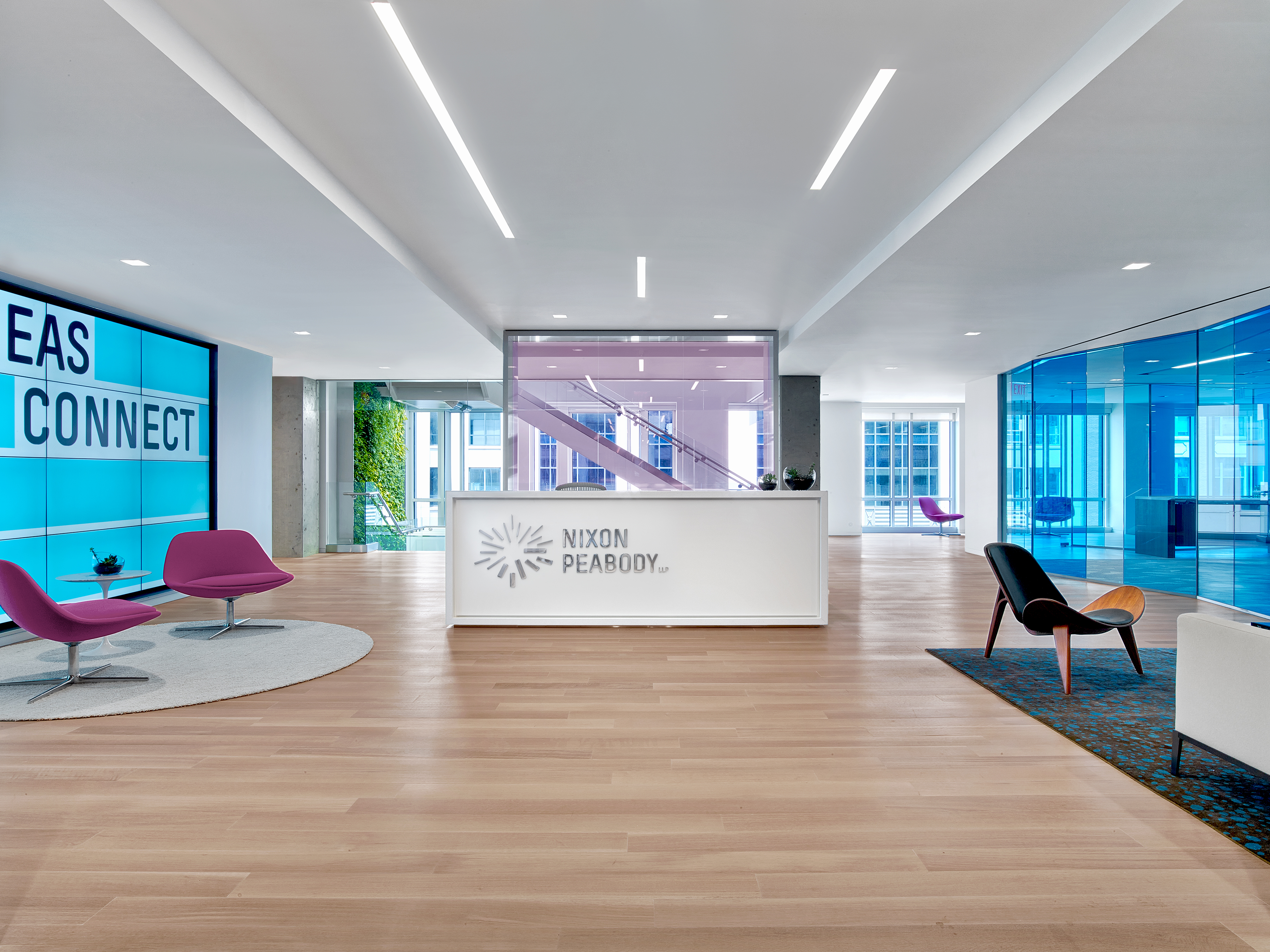
We can’t wait to host our next Work Design TALK at Nixon Peabody’s DC office on September 20. The panelists are all legal workplace experts — three of whom had a hand in the project — and we’ll be discussing the evolution of law office design with them generally, as well as the cultural resonance of the solutions they’ve implemented at Nixon Peabody, in particular.
Scroll for images of the space and more details about the project from the design team at Perkins+Will, and click here for tickets to the TALK on September 20!
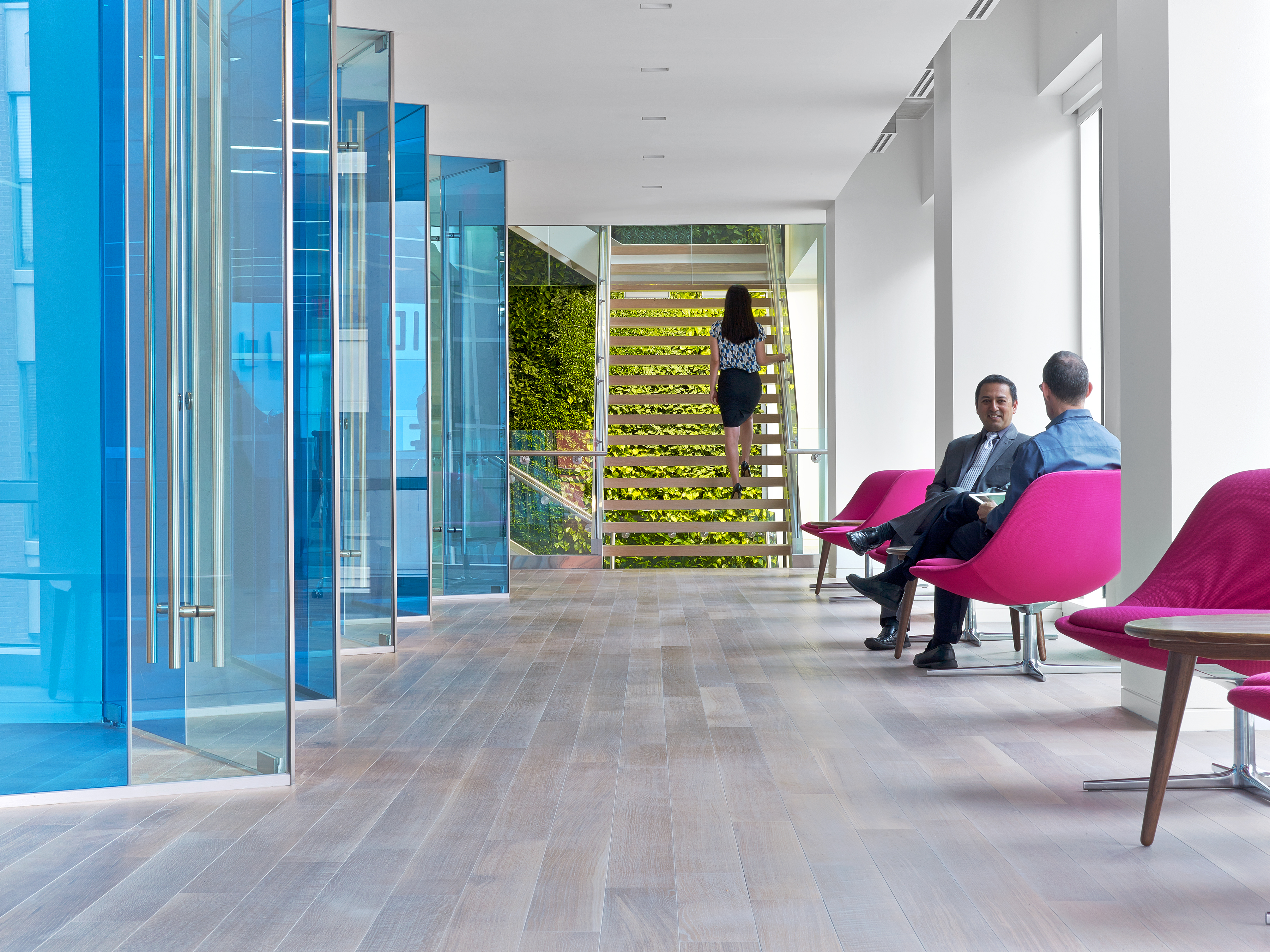
What is the address of the project?
799 9th Street, NW, Suite 500, Washington, DC 20001
Who was the building architect?
Who was the interior architect/designer?
Perkins+Will
When was the project completed?
June 2015
What is the total square footage?
65,565 RSF

What is the square footage per person?
437 RSF per employee
How many total employees are there?
Approximately 150 employees
What is the location’s proximity to public transportation and other amenities?
One block from Gallery Place Metro Stop, across the street from City Center, one block from Smithsonian’s Portrait Gallery, one block from the Verizon Center, two blocks to Chinatown, and walking distance to restaurants and shops.
What were the construction/hard costs per square foot?
$110/RSF
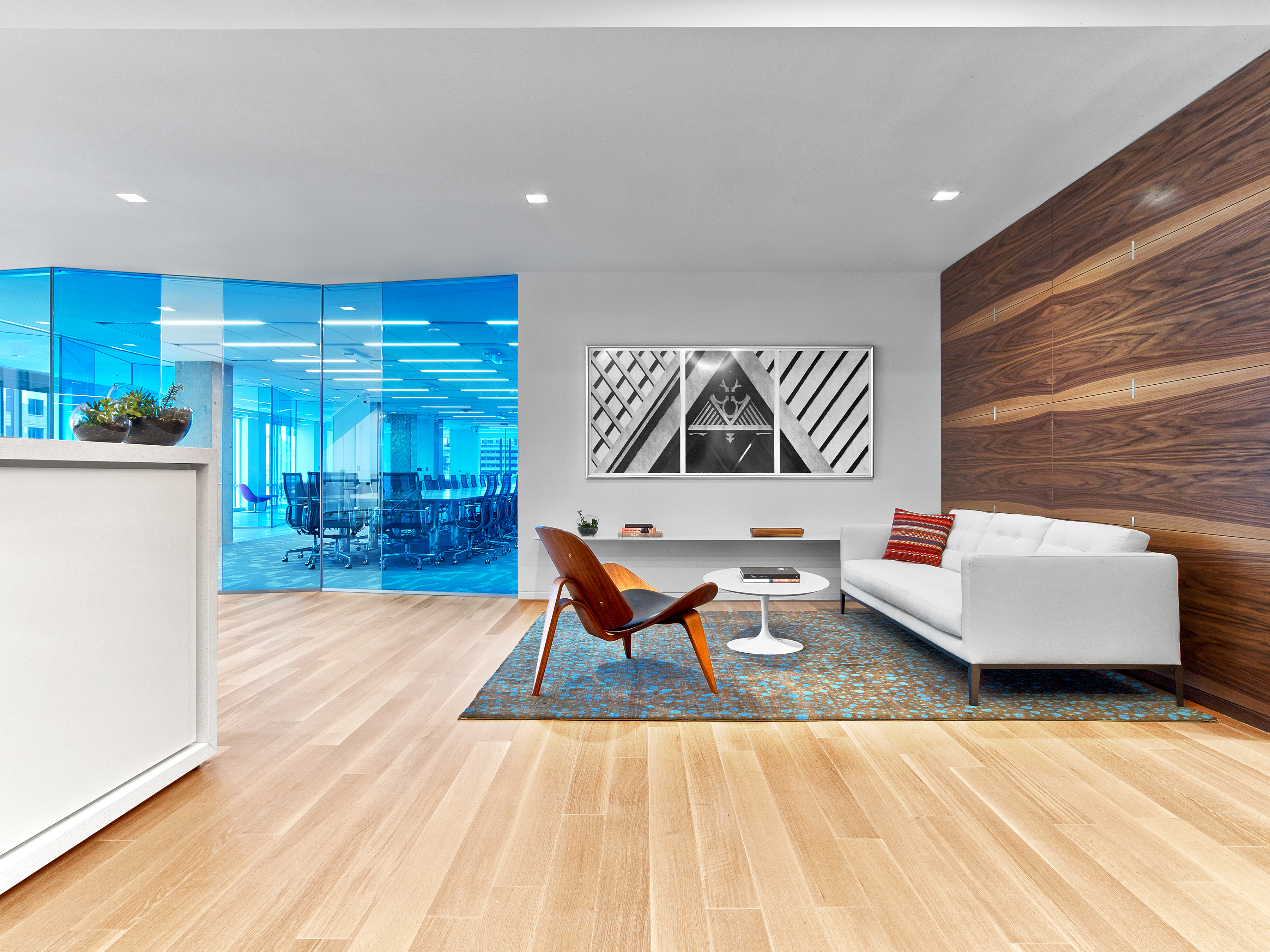
Which furniture brands/dealers were used? Please touch upon any notable products and how they were used.
- Dealers: MOI & Bialek Environments
- Office and workstation furniture: Knoll
- Conference room furniture: Herman Miller, Nienkämper
- Lobby furniture: Bernhardt Design, Coalesse, Studio TK, KnollStudio, Arzu Studio Hope
- Seating and ancillary furniture: Arper, Bernhardt Design, Coalesse, Davis, Geiger, Herman Miller, Poltrona Frau, Jas. Becker, KnollStudio
- Ergonomic accessories: Humanscale
- Upholstery throughout: Bernhardt Textiles, Carnegie, Designtex, Geiger Textiles, HBF Textiles, Knoll Textiles, Maharam, Textus, Unika Vaev, Pallas, Spinneybeck, Moore & Giles
Is there a mobile work or work-from-home policy or are most of the employees there all day, every day?
Most employees are in the office all day, every day, although many attorneys travel for business, and on any given day, attorneys are out of the office for court appearances, business meetings, and educational programs.
However, we are responding to changing work styles and providing more flexibility — especially for special considerations like new mothers and childcare needs. We find that our single-size offices with uniform furniture packages (allowing for easy move-in and move-out) and non-assigned corner Team Rooms are critical in managing our space needs.
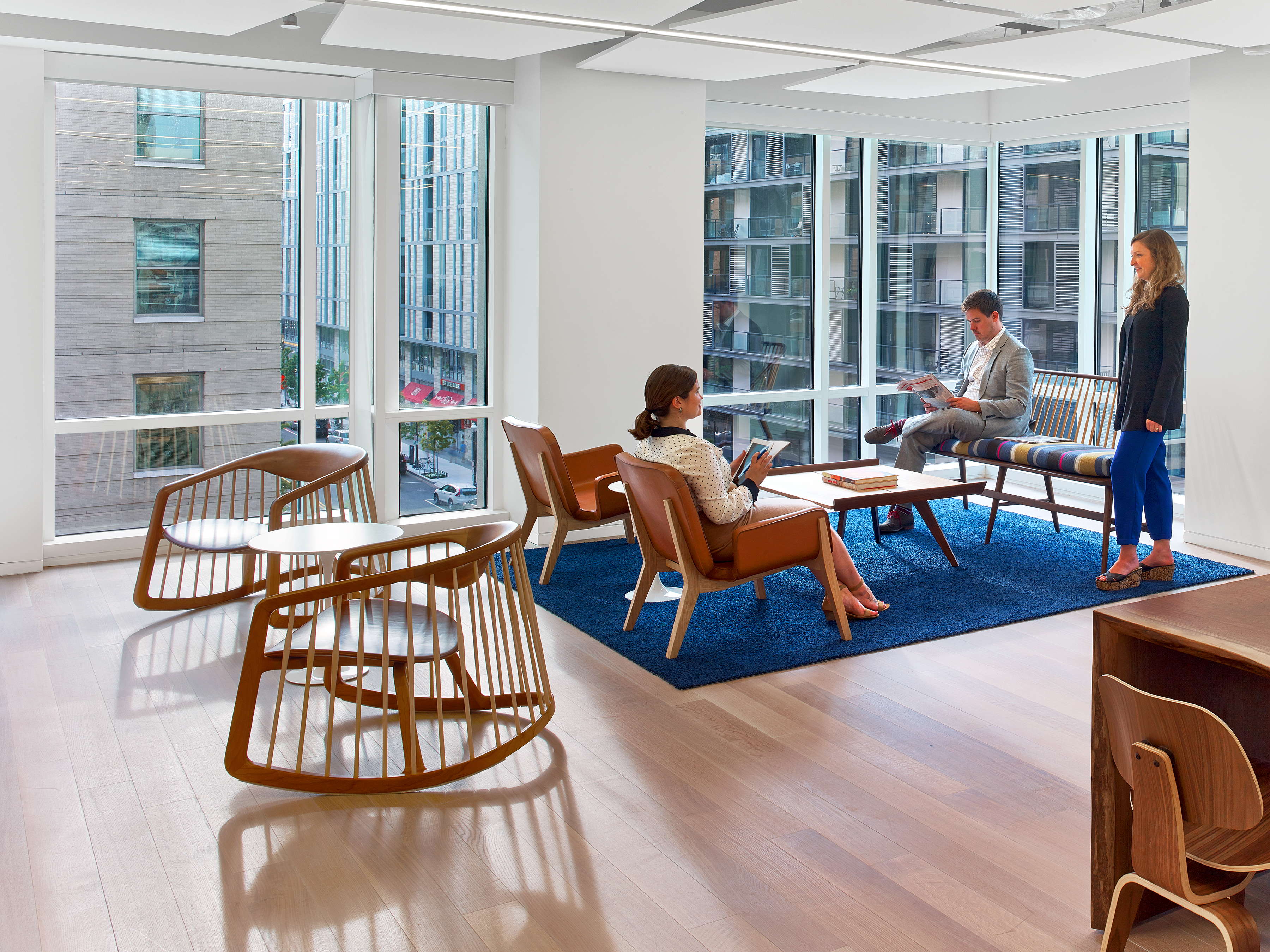
What percentage of the space is unassigned?
Substantially all of the office and secretarial stations are assigned and occupied. However, we have 14 corner “team rooms” (not corner offices) that are available on a non-reserved basis for a variety of functions: visiting attorneys from other offices, retired partners who work from our offices occasionally, conference calls and team meetings, trainings, coffee breaks, lunch rooms, “drop in” work spaces (for change of scenery). These, as well as a few legal case rooms (when not being utilized for specific cases), create our flexible space and have contributed greatly to effective space management.
How is the company’s brand reflected in the space?
Here’s a project description that we originally submitted to the Shaw Contract Blog: “Nixon Peabody is a global law firm and our process began with a firm-wide re-branding aimed at differentiating Nixon Peabody from the competition. The Washington, DC office was the first to design new space after the re-branding process and the team was challenged to create the ‘law firm of the future’. Focusing on strategies impacting health and social equity helped create a paradigm shift in how they work together in the space, aligning office culture more closely with their firm values. The reduction in perimeter office sizes affords the opportunity to have public spaces along the window line that benefit all staff. Office fronts and doors are made of frameless clear glass and allow views to the outside for staff typically buried within interior space. Traditional corner offices are given up to shared team rooms. The Café, prominently located adjacent to Reception, serves as a hub for attorneys, staff, and clients. The space promotes communication, collaboration, and cross-over between practice groups, which was a process we had to work closely with our client on in order to navigate successfully.”
The brand was also interpreted through the full height video wall, bright brand colors in the architectural finishes and upholstery, the material palette that focused on authenticity and craft, and the integration of the logo elements.

What is the most unique feature about the new space?
The three-story living wall and interconnecting stair became the focal point and iconic element of the space. The living wall not only naturally filters the air, but it provides an outward expression of the firm’s commitment to sustainability. The stair also acts as a light well, because of its position against the exterior glazing, and encourages active design.
If the company moved out of a previous space, what was the hardest aspect of change for people?
The hardest aspect of change proved to be fear of change. In our case, we were not just moving geographically, but to offices that represented a paradigm shift in our work space — smaller partner offices, no corner offices, open secretarial areas, more limited storage, an office that promotes (and requires) movement to get to important collective spaces, an abundance of public areas that are open and connected and a tremendous amount of transparency. This last item, represented in part by unfrosted glass-front offices for attorneys and staff, was probably the hardest aspect of change. Most attorneys worked for many years in offices with solid walls and doors, providing a great amount of visual (and, if they chose to close their solid doors, acoustical) privacy. And this established long-held work style norms for them. Several attorneys expressed reservations about feared lack of privacy and distractions. While recognizing the neurological and psychological challenges in making such major changes, we were convinced (including by a huge amount of research) that people in general would both adapt to and thrive in the type of workspace we envisioned. The good news is that after several months (as the research indicated would happen), people generally adapted to this shift to transparency — and grew to recognize the value of the energy and connectivity the office provides.

Please share any illuminating, surprising, or hoped-for results you might have gleaned from post-occupancy surveys.
Feedback from Jeff Lesk, managing partner of the DC office [and panelist at our upcoming TALK!]:
“We’ve seen a significant increase in the number of people who are getting up from their desks and moving around more frequently, especially in two particular ways. Our prior office in a multitude of pantries where employees could go for coffee, storing and retrieving lunch, preparing breakfast, and for many other uses, all within a very short distance from almost every employee’s desk. In our new office, our Café has become a magnet for all of these activities. It’s spacious, inviting, vibrant, and the place you go to connect with others in the office. And it’s one of only three places on three floors where employees can go for these sorts of things. (Each other floor has a much smaller break area.) The café is strategically located right off the monumental staircase, which is beautifully-designed, inviting, located along a window line, and adjacent to a three story green wall. Collectively, these features have resulted in many more employees using the stairs (several times during the day), and walking much greater distances for these functions. Several employees have observed that taking this route makes them feel good both physically and emotionally. Perhaps it was articulated best by one employee who compared this “journey” to taking a nature walk indoors. It has the elements of light, airiness, greenery, wood, and even sky and water (suggested by the generous use of blue glass). Several other employees have noticed the ‘calming’ effect — not just of walking up and down the staircase, but also of the whole experience of moving through the space.”

